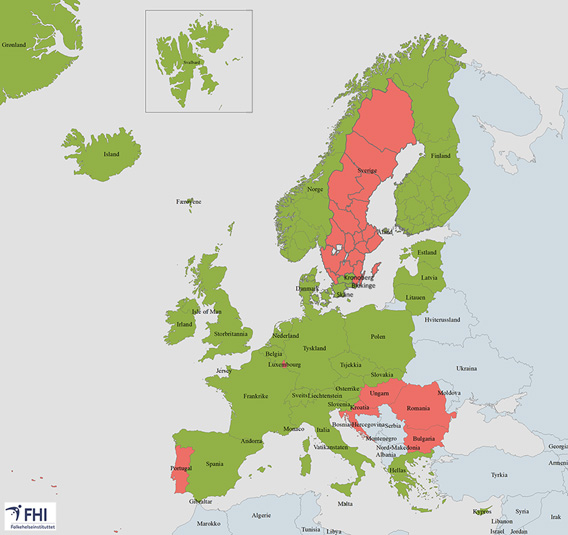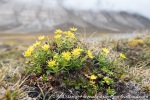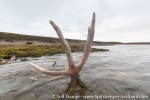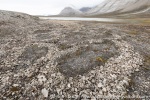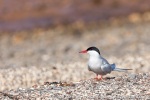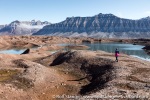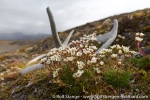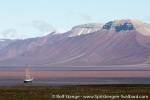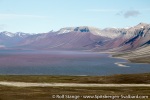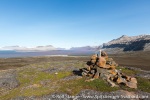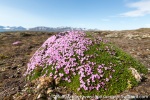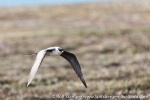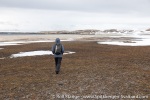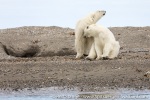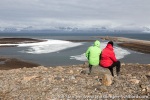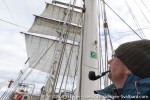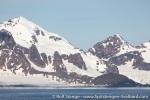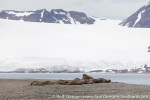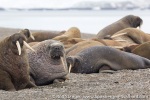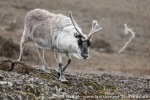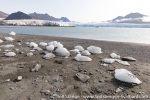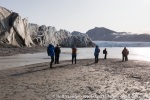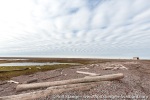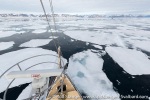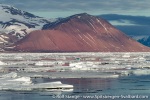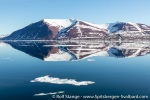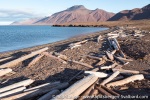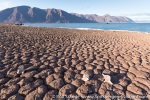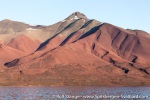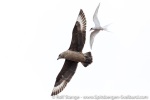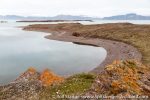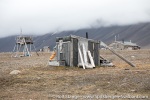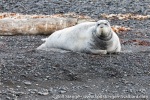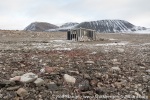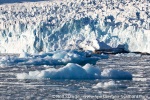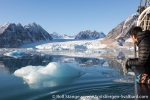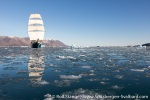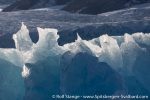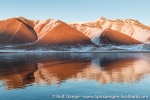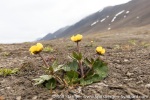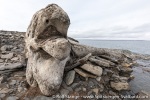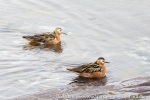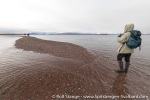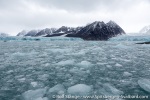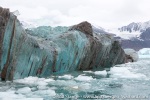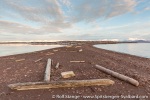-
current
recommendations- Liefdefjord
New page dedicated to one of Spitsbergen's most beautiful fjords. Background information and many photos.
- New Spitsbergen guidebook
The new edition of my Spitsbergen guidebook is out and available now!
- Liefdefjord
New page dedicated to one of Spitsbergen's most beautiful fjords. Background information and many photos.
Page Structure
-
Spitsbergen-News
- Select Month
- May 2025
- April 2025
- March 2025
- February 2025
- January 2025
- December 2024
- November 2024
- October 2024
- September 2024
- August 2024
- July 2024
- June 2024
- May 2024
- April 2024
- March 2024
- February 2024
- January 2024
- December 2023
- November 2023
- October 2023
- September 2023
- August 2023
- July 2023
- June 2023
- May 2023
- April 2023
- March 2023
- February 2023
- January 2023
- December 2022
- November 2022
- October 2022
- September 2022
- August 2022
- July 2022
- June 2022
- May 2022
- April 2022
- March 2022
- February 2022
- January 2022
- December 2021
- November 2021
- October 2021
- September 2021
- August 2021
- July 2021
- June 2021
- May 2021
- April 2021
- March 2021
- February 2021
- January 2021
- December 2020
- November 2020
- October 2020
- September 2020
- August 2020
- July 2020
- June 2020
- May 2020
- April 2020
- March 2020
- February 2020
- January 2020
- December 2019
- November 2019
- October 2019
- September 2019
- August 2019
- July 2019
- June 2019
- May 2019
- April 2019
- March 2019
- February 2019
- January 2019
- December 2018
- November 2018
- October 2018
- September 2018
- August 2018
- July 2018
- June 2018
- May 2018
- April 2018
- March 2018
- February 2018
- January 2018
- December 2017
- November 2017
- October 2017
- September 2017
- August 2017
- July 2017
- June 2017
- May 2017
- April 2017
- March 2017
- February 2017
- January 2017
- December 2016
- November 2016
- October 2016
- September 2016
- August 2016
- July 2016
- June 2016
- May 2016
- April 2016
- March 2016
- February 2016
- January 2016
- December 2015
- November 2015
- October 2015
- September 2015
- August 2015
- July 2015
- June 2015
- May 2015
- April 2015
- March 2015
- February 2015
- January 2015
- December 2014
- November 2014
- October 2014
- September 2014
- August 2014
- July 2014
- June 2014
- May 2014
- April 2014
- March 2014
- February 2014
- January 2014
- December 2013
- November 2013
- October 2013
- September 2013
- August 2013
- July 2013
- June 2013
- May 2013
- April 2013
- March 2013
- February 2013
- January 2013
- December 2012
- November 2012
- October 2012
- September 2012
- August 2012
- July 2012
- June 2012
- May 2012
- April 2012
- March 2012
- February 2012
- January 2012
- December 2011
- November 2011
- October 2011
- September 2011
- August 2011
- May 2011
- April 2011
- March 2011
- February 2011
- January 2011
- December 2010
- November 2010
- September 2010
- August 2010
- July 2010
- June 2010
- May 2010
- April 2010
- March 2010
- February 2010
- November 2009
- October 2009
- August 2009
- July 2009
- June 2009
- May 2009
- April 2009
- March 2009
- February 2009
- January 2009
- December 2008
- November 2008
- October 2008
- August 2008
- July 2008
- June 2008
- May 2008
- April 2008
- March 2008
- February 2008
- April 2000
- Select Month
-
weather information
-
Newsletter

| Guidebook: Spitsbergen-Svalbard |
Home →
Yearly Archives: 2020 − News & Stories
Norway about to open borders for tourists from most EU countries
The Norwegian Ministry of economics and fisheries has communicated that tourists from most EU-countries will be allowed to travel to Norway again from 15 July. Today (10 July) the Norwegian institute for public health (Folkehelseinstitutt) has published a map which shows the various European countries in green or red, respectively. Tourists from “green countries” will be allowed to enter Norway from 15 July without special reason or permission. Citizens from Scandinavian countries except Sweden were already allowed into the country from 15 June.
This map is, however, to be updated at intervals of 14 days or at any time earlier if needed. Tourists from countries with higher or unclear infection rates may be faced with travel restrictions such as quarantine.
Not all EU-countries have made it onto the “green list”: Portugal, Luxembourg, several countries in southeast Europe and most parts of Sweden are bright red on the map. The example of Sweden shows that the Norwegian government may take decisions on a regional level: tourists from several provinces in south Sweden (Blekinge, Kronoberg and Skåne) may also travel to Norway without restrictions from 15 July, in contrast to the rest of the country.
Tourists from countries outside Europe are currently generally not allowed into Norway unless they have close relatives or a partner in the country, according to the Norwegian government.
Spitsbergen with Antigua – some thoughts
Normally, on this site I write and publish articles and blog posts about things that have actually happened, and I try to keep it mostly in unemotional style. But the world isn’t normal these days, so this article/blog/whatever is a bit different.
It is about something that does not happen and it is latently emotional.
Yesterday, on 09 July, we would have boarded good old SV Antigua in Longyearbyen. About 30 passengers, probably quite excited, in good spirits and with high hopes and expectations. Ten crew: the Captain (probably Robert), mates, deckhand, galley and service, three guides – Alex, Kristina and me. Everybody had been looking forward to this trip for quite some time already, until the whole thing fell victim to the corona virus, as so much this weird year. 19 beautiful days in Spitsbergen – gone. Not just any kind of days. Spitsbergen under sail, that is always special, intense and rich with all sorts of experiences. On every trip, we see and experience stuff where I think “wow, how amazing is that …” and that is after almost 25 years of travelling Spitsbergen.

Spitsbergen with Antigua: would have started yesterday (9 July).
Nobody will ever know what we will actually have missed this summer on this trip and others that don’t happen now. But of course it is possible to dream and guess a bit. Let’s try to take it a little step up onto an informed level. As always, it starts with a look at weather forecast and icechart:
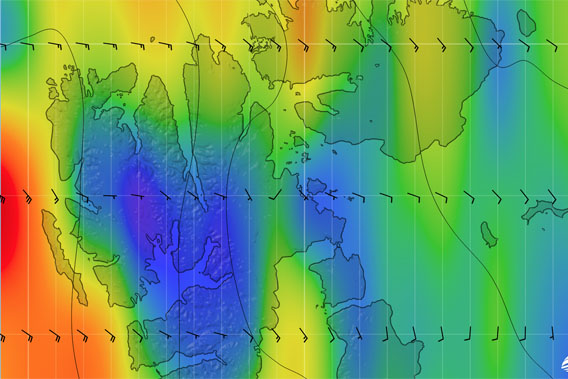
Marine weather forecast for Saturday (12 July).
Today (Friday), there would still have been a fair bit of wind on the west coast. Maybe not great for a first day on a ship, but it should be calm in Isfjord, albeit possibly a bit wet, at least during Friday night and Saturday early morning. I think we might have well spent our first day in there. There are so many fjords with an endless number of beautiful places there. Tempelfjord, Billefjord, Nordfjord with Ekmanfjord, Coraholmen and so on, Bohemanflya, … just to mention a few (click on the links for a bit of online travelling). The list is endless.
On Saturday, the wind on the west coast is supposed to turn south. I guess then we might have left Isfjord to set sail and a northerly course with fine sailing wind. The forecast indicates calm weather for a couple of days next week in the north, and then it is just a wonderful world to explore.

Marine weather forecast for Sunday (12 July).
And now a quick look at the ice chart, which is really an interesting one now. There is still a lot of drift ice in the east and northeast and many of the fjords, especially on Nordaustland, are still frozen solid. As it looks now, this trip would not have been a circumnavigation. This is, in times of climate change, not common for a trip that starts near mid July, but obviously not impossible. Of course it would have been exciting just to go and check it out, but it is also interesting to keep checking the ice chart every once in a while during the next couple of weeks and see what happens.
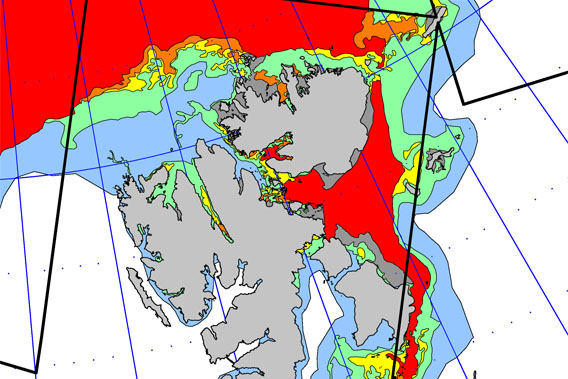
Ice chart Spitsbergen as of 09 July (© Norwegian Meteorological Institute).
But then, have a good look at, say, Liefdefjord and Woodfjord! Open – probably mostly navigable, in other words – drift ice, with some larger ice fields, such as the yellow dot close to Reinsdyrflya, and solid (“fast”) ice in inner Woodfjord! We could certainly have spent a couple of great days there. And then on to Nordaustland and Hinlopen. The combination of drift ice, stunning scenery and a lot of wildlife, from guillemots to walrus, polar bears and probably whales would most likely have made for some unforgettable experiences.
Isfjord
Who knows what we might have done and seen the first day(s) in Isfjord? Just a few impressions from previous years. Could have been something like this. Or something completely different.
- gallery anchor link: #gallery_1801
Click on thumbnail to open an enlarged version of the specific photo.
Forlandsund
We spent quite a bit of time in Forlandsund last year, as those who were there will remember with no regrets 😉 all the Forlandsund pictures are from 2019.
- gallery anchor link: #gallery_1802
Click on thumbnail to open an enlarged version of the specific photo.
Woodfjord and Liefdefjord
Just a few possible impressions as we might have met them now in Woodfjord and Liefdefjord. And Spitsbergen’s north coast is, of course, much more than “just” that. There is also the Raudfjord, Wijdefjord, Sorgfjord … oh, well …
- gallery anchor link: #gallery_1803
Click on thumbnail to open an enlarged version of the specific photo.
A lot of “might have” and “would” and so on. It is currently nothing but imagination and dreams. Unseen, not experienced, not lived. The 40 polar enthusiasts that should have met on a sailing ship to explore the far north, to share the excitment and fascination, will never meet in this combination. Sad.
So, fingers crossed that we will meet next year or in 2022 in Spitsbergen, or elsewhere between the north pole and the south pole!
Corona: Arctica II in August cancelled
It is not a good year for tourism and this will probably not really change at any time soon, especially when it comes to the combination of small ships and remote areas. Even though ship-based tourism is now, in theory, possible again in Spitsbergen under strict conditions and Norway is about to open borders again for European tourists, the conditions are strict and make if very difficult, or actually pretty much impossible, to start sailing again especially with small ships.
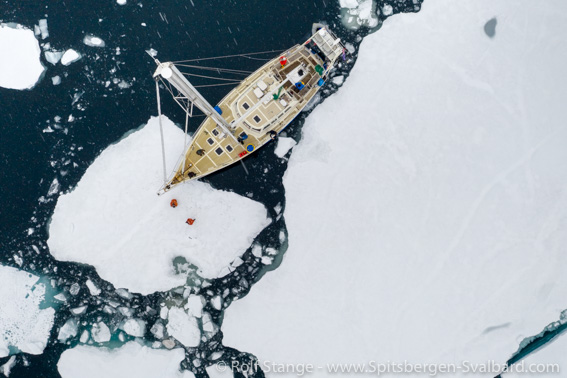
With Arctica II in drift ice near Spitsbergen: we would have loved to do that in August. But it won’t happen because of the Corona crisis.
So, long story, short message: now we are sadly forced to cancel also our trip with the sailing boat Arctica II in August because of Corona. All participants will asap be contacted by the Geographische Reisegesellschaft.
Norway opens for tourists from 15 July
Norway wants to open borders for tourists from Europe (Schengen area/European Economic Area) outside Scandinavia from 15 July. In a press release, the Norwegian government explains that there will still be restrictions: The Norwegian Folkehelseinstitutt (authoritiy for public health) will monitor the Corona development in relevant countries and regions. Tourists from areas with SARS-Coronavirus-2 (“Corona”) infections above a certain threshold will have to stay in quarantine for 10 days in Norway. Tourists who need to stay in quarantine and who want to travel to Spitsbergen have to to their quarantine on the Norwewian mainland and can only travel further on to Spitsbergen when they have done their time.
Also tourists from countries who do not monitor the development appropriately or who do not publish relevant data will have to expect such restrictions.
The Folkehelseinstitutt publishes a map that shows countries in green or red. Tourists from countries shown in green will be able to enter Norway without quarantine from 15 July (earlier for Scandinavian tourists). Currently, the map shows only Scandinavia. An updated version including all European countries that are part of the Schengen area or European Economic Area is expected for 10 July. It will be updated at least every 14 days.
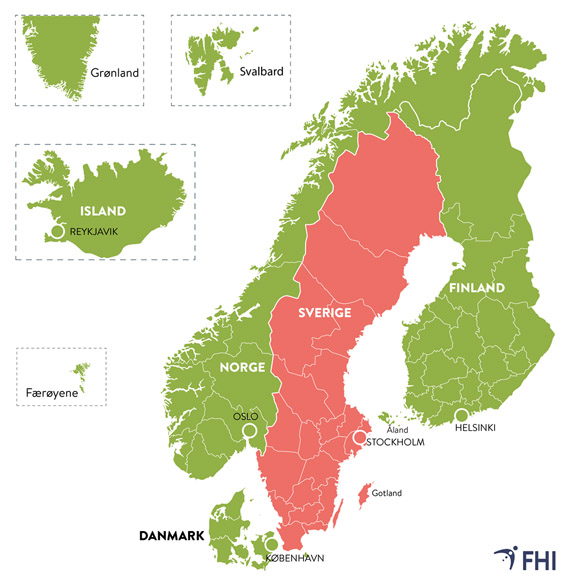
Map of the Folkehelseinstitutt: tourists from green countries may enter Norway without quarantine. Currently only Scandinavia is shown, Europe will follow on 10 July.
Currently, only people with special reasons such as close family relationships, work or property may enter Norway under certain regulations (unless you are Scandinavian but not Swedish).
Lethal anaesthetisation of polar bear criticised by authorities
A polar bear was anaesthetised and flown out from the Longyearbyen area by the Sysselmannen earlier this year, on 30 Januar. The bear, a young female of only 62 kg, died during the flight. Shock caused by physical stress in combination with the anaesthetisation was later identified as the cause of death. The bear had been chased away from Longyearbyen by helicopter for more than two hours before it was put into deep sleep.
Now the case was criticised by Mattilsynet, the Norwegian authority for food safety, which is also responsible for animal welfare including anaesthetisation (immobilisation by means of medication) of wild animals, as Svalbardposten describes with a long article. This is something that happens often in Spitsbergen, mostly in connection with research, sometimes also when the police (Sysselmannen) handles polar bear near Longyearbyen. The Norwegian animal welfare law is also in force in Spitsbergen, but not so the animal health personell law (Dyrehelsepersonelloven). The application of its main principles is, however, demanded by the animal welfare law.
Mattilsynet has found several points of criticism, also mentioning a lack of competence. One point of general criticism is the lack of knowledge-based routines for catching (anaesthetising) polar bears; something that representatives of the Norwegian Polar Institute, which is managing the anaesthetisation, do not agree with. Both the Norwegian Polar Institute, represented by polar bear researcher Jon Aars (who was not involved in the operation on 30 January) and the Sysselmannen, represented by environmental officer Morten Wedege, have replied to the criticism in Svalbardposten.
Another point of criticism is the lack of consideration of the physical parameters of this particular bear before the anaesthetisation. Is is in the nature of the process that a polar bear can not be weighed before anaesthetisation. The one that died in the given case weighed only 62 kg and it appears likely that this may have contributed to the lethal outcome. Additionally, there was no veterinary-medical emergency equipment available and no associated competence to handle any emergency that might occur under anaesthetisation. According to the reply to the criticism by the Norwegian Polar Institute, this should, based on experience from thousands of anaesthetisations of polar bears, not have necessary. But scientific anaesthetisations under much more controlled circumstances, in daylight, with smaller helicopters and as a matter of choice in each individual case, so one may ask if this kind of experience is a good basis for decisionmaking in a case like the one given here.
But this is, as far as known, not further considered by Mattilsynet. Responsible region leader in north Norway Hilde Haug emphasizes that it is their main concern to make sure that such cases do not happen again by improving relevant routines. In case of future recurrence, Haug does not want to exclude use of legally binding steps.

Young polar bear together with its mother. The little bear was about 20 months old at the time the picture was taken and its weight was likely well above 60 kg.
In the Svalbardposten article, two veterinarians give some interesting insight. It is these two who come into question as vets who have prescribed the medication that was used to anaesthetise („immobilize“) the bear on 30 January. But this did not happen in connection with the given case: because of the regular use of the drug, mostly in connection with research and occasionally in the context of police operations, the Norwegian Polar Institute has a stock in Longyearbyen. In principle, the prescribing veterinarian remains responsible for the use of the drug in each case, but he/she is usually in practice not involved. Legally, a vet can let a helper handle the actual use of the drug if responsible. But none of the two vets was contacted in connection with the operation on 30 January, and one of them states that he would have denied use of a drug prescribed by him in this case.
It is, however, uncertain who of the two actually prescribed the batch that was used then. Both assume that it was not from their respective prescription.
It should also be noticed that shooting the bear directly would have been a likely alternative, from the perspective of the Sysselmannen.
It is another aspect that the actual medication may have been out of date, but this is unlikely, according to the Norwegian Polar Institute, and unlikely to have made a difference, had it indeed been the case.
In the press releases during and after the incident, the Sysselmannen emphasized repeatedly the presence and direct involvement of „polar-bear professional specialist competence“ provided by the Norwegian Polar Institute in the operation. No names or professions are given, but veterinarians are usually not directly involved. Both veterinarians who prescribed the drug expressed that they would have appreciated to be contacted, but this did not happen. Even if it may be impossible to fly a vet up to Longyearbyen from Tromsø or elsewhere in mainland Norway in time for such an operation, advise by telephone could have made a difference.
Everybody involved knows the legal and practical complexity of such a situation and the difficulty of making decisions under time pressure and in a situation of stress. But it appears fair to conclude: anaesthetising a large animal such as a polar bear just after having exposed it to great physical stress over more than 2 hours, without knowing its weight and physical condition and without having veterinary-medical emergency equipment and a veterinarian available – that is not exactly what many will consider responsible handling of a strictly protected animal.
Government re-opens Spitsbergen for cruise ships
Re-opening Spitsbergen for land-based tourism is a process that has already begun. Since 01 June, visitors from mainland Norway can travel to Spitsbergen again, other Scandinavian countries (except Sweden) will follow soon, on 15 June.
At the same time it has, so far, been mentioned that “coastal cruises” over several days would take some more time because of their specific challenges. First steps have now been taken to re-open for this kind of travelling: according to a press release by the Norwegian ministry of justice, which is responsible for Spitsbergen, ships may start cruising Spitsbergen again now under several conditions. Only ships with a maximum capacity of 500 passengers are permitted and they may only use 50 % of their capacity. The theoretical maximum number of passengers on board is thus limited to 250. Only passengers from countries whose inhabitants can travel freely to Norway including Spitsbergen are allowed: this is currently mainland Norway and soon also Denmark, Finland and Iceland.
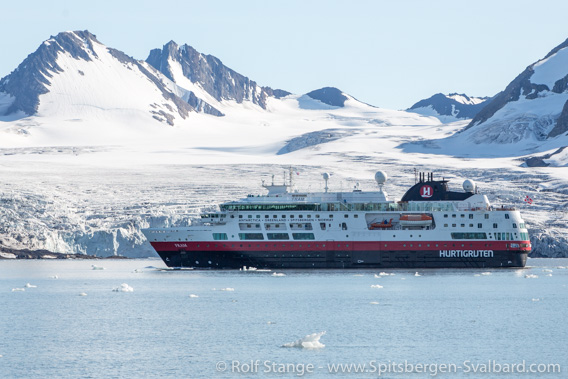
“Coastal cruises” in Spitsbergen: now possible again – under certain conditions.
As all tour operators who are running land-based tourism, a hygiene and health safety plan needs to be prepared and approved by the authorities for every ship, based on general Corona safety guidelines which have been prepared by Svalbard Reiseliv, a local tourism organisation, together with relevant authorities. It remains to be seen which ships will be able to meet the requirements in terms of minimum distances etc.
Ships have to be prepared to sail directly to Tromsø in case of a suspected Covid-19 infection on board, rather than to Longyearbyen.
Passengers from countries other than the above-mentioned Scandinavian ones will need some more patience. The Norwegian government has announced to come with information regarding a possible re-opening of Spitsbergen for citizens and residents from “neighbouring” European countries until 20 July.
Ship-owners and tour operators will have to see if they can actually operate with a maximum capacity of 50 %.
Polar bear shot on Phippsøya in 2018: no report yet
The case of the polar bear that was shot in late July 2018 on the island of Phippsøya by a crew member of the German cruiseship Bremen attracted media and public attention around the world.
A team from the ship had gone ashore on Phippøya, which belongs to Sjuøyane in northernmost Svalbard, to check the site before passengers were scheduled to come ashore. The dramatic incident ended with one person receiving minor head injuries and the bear being shot. Passengers were not ashore during the incident.
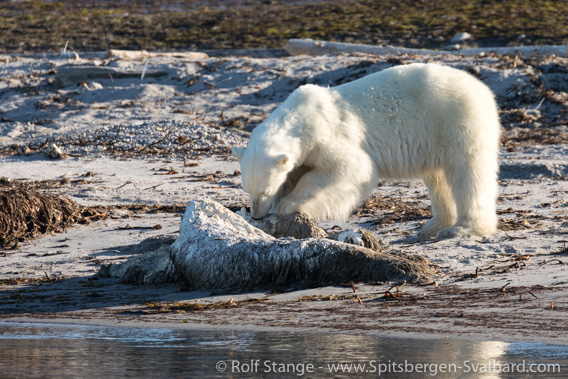
Polar bear on Phippsøya, a common landing site, in mid July 2018. It was very likely this bear that was shot in the same place in late July.
Almost two years have gone past now and one may wonder what came out of the whole thing. The disappointing intermediate result is that there is no result yet, as Svalbardposten was told on request by the Sysselmannen. The case was originally handled by the Sysselmannen and then it went to relevant authorities in mainland Norway for further legal treatment and from there in late 2019 back to the Sysselmannen. And there it still is today. The large capacities absorbed by the Corona crisis are said to have played a role in recent months.
So while we still have to wait for confirmed information, we can speculate a bit about some factors that may have contributed to the tragic outcome: It is certainly possible to not see a polar bear that is in the vicinity in the uneven terrain of that particular place on Phippsøya even if one is alert. There was a carcass on the beach at that time, and the bear had been returning to that carcass repeatedly over a longer period to feed on it. The carcass was lying in the area where landings are commonly made, but it was hard to see from the distance.
If one happens to go ashore close to the carcass, then it is certainly possible that a bear that is in the area, resting and waiting for the appetite to return, shows a rapid and aggressive reaction.
Again: this is speculation, based on local knowledge and experience, including a sighting of a polar bear in this given place in mid-July 2018, which was most likely that particular bear that was shot soon thereafter. Meanwhile, we can curiously await the report from the Norwegian authorities to learn more about what actually happened during the incident.
Avalanche accident on Fridtjovbreen in February: first report
A first report has been published that sheds some light on the tragic avalanche accident that happened on 20 February on Fridtjovbreen. The report is written by a group of people from the Arctic Safety Centre at UNIS, the avalanche group of the local Red Cross and local avalanche observers of the Norwegian avalanche warning system, varsom.no; it was published on varsom.no. It is not a report by the Sysselmannen or other legal or governmental authority and it does not include a legal assessment. The point of the report is to understand the accident and to draw conclusions to improve safety out in the field.
On 20 February, a group of 7, including two guides from the Russian Arctic Travel Company Grumant, left Barentsburg, heading for the glacier front of Fridtjovbreen, south of Barentsburg in Van Mijenfjord. The group made a stop at the southeastern slope of Marcussenfjellet on the higher part of Fridtovbreen to visit a meltwater cave. The cave is very close to the steep slope of Marcussenfjellet and a terrain depression between the cave and the mountain was used to park the snow mobiles. The first three snow mobiles had already stopped when the avalanche went down. Two persons were completely covered by the snow masses and two others partly. The three remaining persons were not caught by the avalanche.
The volume of the avalanche is estimated to have been near 10,000 cubic metres, the collapsed snow area on the slope was 13,000 square metres.
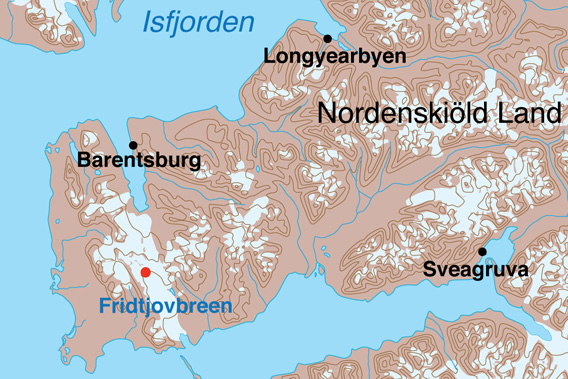
The approximate accident site is marked with the red dot.
Map base © Norwegian Polar Institute.
Modified by landkarten-erstellung.de and this author.
The two persons who were completely under snow died. According to an official press release (Sysselmannen), the two victims were Sascha Brandt (39) and Magdalena Katarina Zakrzewski (40), both from Germany.
One of the two victims was covered by half a metre of snow. This person was dug out after 20 minutes. The other one was under two metres of snow. In this case, it took one hour. The guides and other group members used avalanche probes and snow shovels to recover the victims.
The group did not have any avalanche transceivers/avalanche beacons.
Alarming the rescue forces took time because the satellite phone that the group was equipped with was on one of the snow mobiles that were covered with snow (there is no mobile phone coverage in this area). Finally, the second guide could use an InReach to send a message to Barentsburg, from where the Sysselmannen in Longyearbyen was informed. The rescue helicopter could not land on location due to poor weather. It took two hours from the emergency call and until the rescue forces arrived. The doctor who came as part of the rescue team could only declare the two victims dead.
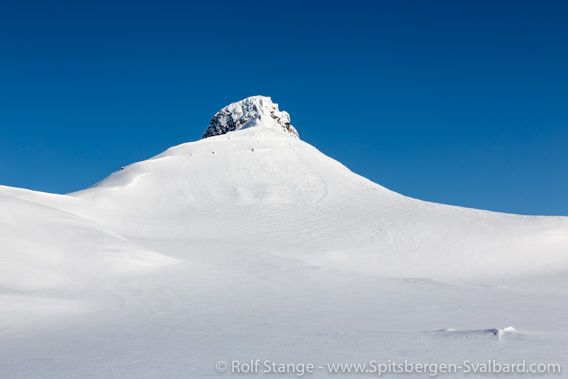
Beautiful, but also dangerous: mountain slope at Fridtjovbreen
Snowfall, wind and fluctuating temperatures during the weeks before the accident had contributed to the general avalanche risk: several layers of firn with poor bonding capabilities were under a layer of fresh, wind-blown snow. The Norwegian avalanche warning service (varsom.no, link above) had issued a level 2 warning (moderate risk; the highest level is 4).
One of the conclusions of the reports is that the presence of the group, with the impact of the snow mobiles on the snow, had triggered the avalanche.
As general recommendations, the report points out that all members of a snow mobile group should have avalanche equipment (specifically avalanche transceivers/beacons, snow shovel, avalanche probe) and everybody should be trained in the use of the equipment. Ideally, this should also be the case for tours in easy, open terrain, where avalanche-prone slopes can be kept at a safe distance, according to the report. But it is especially important for tours in complex terrain, closer to avalanche-prone slopes. The terrain of the tour from Barentsburg to the front of Fridtjovbreen is generally easy and in open terrain, but things are different for the deviation from the common route to the ice cave close to Marcussenfjellet.
As mentioned: the report in question is an evaluation of the incident by avalanche experts with local knowledge and not a legal assessment. This will be made by Norwegian authorities and it is currently still in process and not yet published.
Spitsbergen with Antigua in July cancelled
It is really not a surprise, but now it is official: our Spitsbergen voyage with Antigua in July is cancelled for reasons that will hardly require an explanation. The participants who are booked on this voyage will be contacted soonest by the Geographischen Reisegesellschaft.
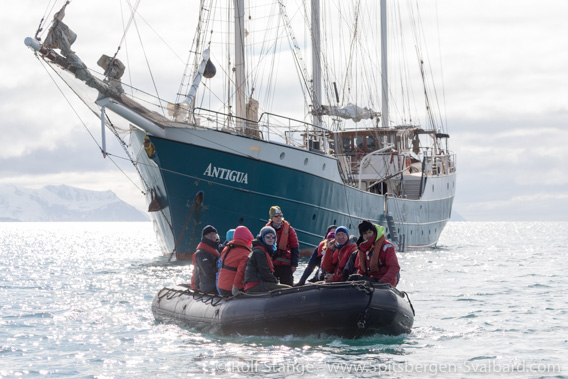
With Antigua in Spitsbergen: won’t happen in July 2020.
I have to admit that this is a bit emotional. The thought of all the arctic soulfood that is lost this year can bring more than just a bit of water to one’s eyes. Certainly to mine, at least. This summers’ first, early season trip in Spitsbergen on Antigua would be happening right now. Still a lot of snow and ice up north. But in real life, Antigua is about as far away from Spitsbergen as most of you readers will be. A few weeks ago, on the trip up from mainland Norway to Spitsbergen, we might have seen Bear Island as we haven’t seen it at all in recent years: with dense ice packed all round the shores! We can only imagine how good that might have been. Sad. I am sure that I can honestly think and write that on behalf of all passengers and crew.
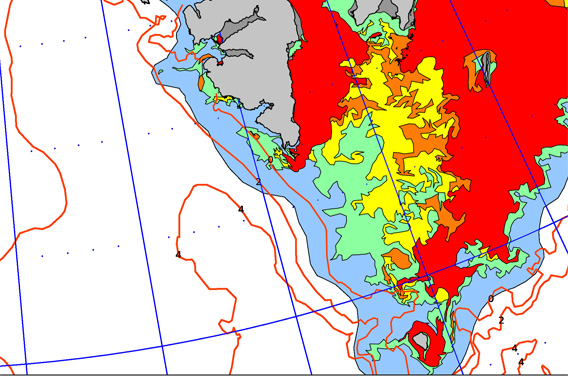
Ice chart of south Spitsbergen, early May: ice around the south cape, Bear Island and on the east coast, Bellsund frozen solid. How good would that have been …
Ice chart © Norwegian Meteorological Institute.
Beyond all the good experience that is now lost, you may imagine that this is also a bit of a tough blow economically. In this context, I may mention that my Spitsbergen online shop has never been closed and it will remain open and accessible at any time and you can find a lot of good stuff there to travel the Arctic without leaving the sofa! Next to the famous Spitsbergen bible, there is the less famous, but maybe even more beautiful photo book with the aerial photos or, with the driftwood picture frames and the kitchen slats, a real piece of Spitsbergen on the wall or the kitchen table, respectively, to mention just a few.
Generally, tourism is starting up slowly again in Spitsbergen. Emphasize “slowly”. But this, again, will hardly come as a surprise: so far, only tourists from mainland Norway can visit Spitsbergen. Danish tourists will be the next ones who will be allowed in from 15 June. The Norwegian government has announced to make a statement regarding visitors from “near-by European countries” until 20 July. So, stay tuned.
Anyway, ship-based travelling over several days is so far excluded and it is announced that it will take “more time” (without further specification) until this kind of travelling can take place again.
Unemployment remains high in Longyearbyen
Unemployment has reached levels unheard of in Longyearbyen before during the Corona crisis and it remains high: currently, 344 persons have registered as unemployed (completely or partly) with NAV (Arbeids- og velferdsforvaltningen, the Norwegian authority for unemployment and social security office), according to Svalbardposten.

Much more dangerous than polar bears: the Corona-virus.
kills people and jobs all over the world (photo composition).
That is only 6 less than during the previous week, in spite of preprarations and bookings having started for the first tourists from mainland Norway who are expected to return to Spitsbergen from 01 June.
The high unemployment level causes great problems for many. Social welfare from Norway for citizens of countries outside EEA (European Economic Area) is limited until 20 June. After that, the only help that citizens of such countries may get is a subsidy to their travel expenses on the journey to their country of origin.
Because of the Spitsbergen Treaty, there is almost complete liberality of access, stay and work, but in exchange, there is no social security by Norway for non-Norwegian citizens.
Public grants for travel costs instead of living expenses; tourism starting up again
Unemployment has gone through the roof in Longyearbyen during the Corona pandemic and many have come into financial troubles. Only Norwegian citizens are eligible for support from the Norwegian public welfare system because of the conditions of the Spitsbergen Treaty. Others have to take care of themselves or they have to ask for support in their home countries.
Nevertheless, the Norwegian government had stepped in and offered public help for citizens of third countries in Longyearbyen to prevent a social crisis. This programme will, however, cease on 20 June and the government in Oslo does not consider to extend it, despite such demands being raised in the discussion in Longyearbyen. Instead, the government wants to offer financial help with travel expenses to those who want to leave and return to their home countries, according to a press release by minister of justice Monica Mæland..
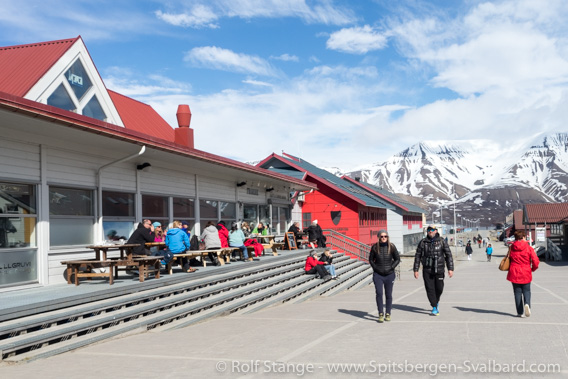
Tourists and locals enjoying the sunshine in Longyearbyen:
this is what everybody is hoping for from 01 June.
Politicians, companies and many individuals in Longyearbyen hope that not many will have to make use of this offer from the government. Tourists from mainland Norway can come to Spitsbergen again from 01 June and bookings have started to come in. Some tour operators have told Svalbardposten that they are currently happy with the development of bookings. Still, the majority of employees are at home without work, and some have already left Longyearbyen. But for many who come from countries further away such as Thailand, getting to their home countries would be very difficult because of current travel restrictions.
In the end, it will of course be the development of the Corona pandemic that will control the development: so far, there is no case of Corona confirmed in Longyearbyen. Nobody can tell how long this will last and what will happen then.
Stepwise ease on Corona-quarantine in Spitsbergen UPDATED
Updated 16 May and 17 May
The quarantine regulations for Spitsbergen are about to be phased out for locals and tourists. To start with, the quarantine will be disestablished for locals from today (Friday, 15 May) 1800. This will include private guests and visitors who are coming for professional reasons, including scientists, according to a press release from the Sysselmannen. The regulations in detail as issued by the Sysselmannen can be found here. Private guests are defined as closely related family members by Minister of Justice Monica Mæland.

About to be eased: Corona quarantine on Spitsbergen: (photo composition).
Travellers coming for work purposes shall be allowed to come to Svalbard without quarantine from 01 June.
“Leisure visitors” – tourists, in other words – from Scandinavian countries (“Norden”) can come from 15 June without having to stay in quarantine.
It will be considered to open for tourists from other neighbouring European countries from 20 July, as Minister of Justice* Monica Mæland said during a press conference on Friday.
(*in an earlier version of this text, it said “Minister for Economic Affairs”. This was not correct. Monica Mæland is, of course, Minister of Justice and emergency services).
Hygiene and health safety plans which are accepted by authorities will be required for any organized travelling.
The Sysselmannen emphasizes that it will not be a quick and full return back to what it used to be, but a step-wise approach to a new kind of normality. Limiting the total number of tourists in Spitsbergen is in consideration, and it is said that it will still take “some time” before cruises over several days can take place again.
Generally, the Norwegian government does not recommend international holidays until at least middle of August.
First complete count of Beluga whales in Spitsbergen
Marine biologists have for the first time made a complete census of Beluga whales in Spitsbergen to get a precise estimate of the population. The result was made available on Researchgate in February.
The scientists around the Norwegian marine biologist Christian Lydersen have made aerial surveys of the coastlines of almost all islands in Svalbard. Additionally, they have covered the open water areas of the large fjords on the west coast and individual transects out towards the open sea to get an overview as complete as possible.

Beluga whale in Dicksonfjord. Large groups are very difficult to count. There is only one in the picture, but how many did we see within 5 km or so around it? Dozens? Hundreds?
The result is indeed surprising: 22 groups with a total of 265 animals were sighted. Statistical calculations result in a population estimate of 549 White whales for the whole Spitsbergen archipelago (95 % confidence interval: 436-723).
There are, of course, remaining uncertainties. More animals than estimated may have remained invisible during the survey. But even if you increase the result based on a higher estimate of unseen individuals, it remains surprisingly low. Until now, all there was was rough estimates based on observations which were more punctual in space and time. These may have been corrupted by the migrational behaviour of White whales, which often seem to circle around in certain areas for a while, giving an observer who remains in one place on the coast the impression that one group is moving through after the other.
It is also so far unknown if there is a connection to Beluga whales in Frans Josefs Land (Russian Arctic). If Spitsbergen and Frans Josefs Land share a population, as is the case with polar bears and walruses, then it would again be a completely different picture. But the few data that are available from tracking Beluga whales do not support this, but it can certainly too early to exclude this hypothesis.
Opening Spitsbergen for tourists: work in process
Opening Spitsbergen for tourists again in the Corona crisis is still work in process. Negotiations supposed to result in a careful are going in between the industry and various authorities. Tourism representatives had expressed their hope to get a date already on Friday or at least on Monday (11 May), but this has obviously not yet happened. Some tour operators hope to re-start their business from 01 of June.

Applies to all of Spitsbergen and will stay for a while:
Corona-quarantine (photo composition).
Especially travellers from outside Norway should take their time, observe the further development and read the small print. It appears likely – official confirmation is pending – that Norway will keep a quarantine for everybody who enters the country, according to the newspaper Dagbladet. The quarantine will be reduced from 14 to 10 days, probably also in Spitsbergen, and it will apply to everybody who is entering the country regardless of nationality, something that would make such a procedure comply with the Spitsbergen Treaty. This means that Spitsbergen as a destination might not be realistic for people who are not already in Norway.
All organised travelling will require a health safety plan accepted by the authorities.
This appears to be the current situation. Final confirmation and the futher development remains to be seen.
Talks about careful re-opening of tourism
Several meetings have taken place in Longyearbyen this week with representatives of the tourism industry, the Sysselmannen and other authorities to discuss options for a careful opening of tourism, upon which many jobs depend.
A central task is creating a plan with hygiene- and other practical measures that ensure a safe and healthy practice for travelling. Such a plan is now work in process.
Sysselmannen Kjerstin Askholt emphasizes that a quick and complete restart will not happen. The idea is a careful and step-wise approach of a normal situation. Public health and safety, with the limited emergency and health services in mind, will have priority.
All involved seek a date to start first activities to give the companies a basis for planning. Such a date is not known at this time.
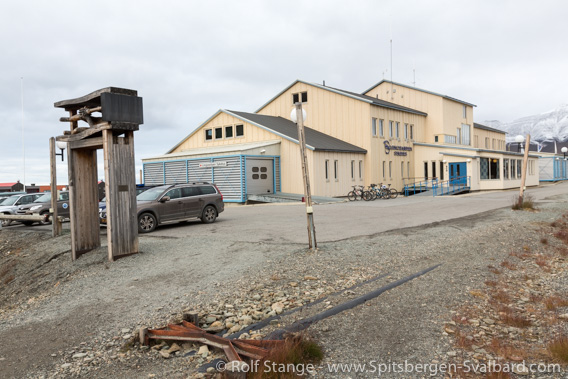
Hospital in Longyearbyen: Capacities are limited and the next big hospital far away.
It is unclear which ways of travelling will be possible again to start with. The assumption that tourism will, for a while, be limited to forms of travelling that involve limited numbers of persons and that take place not far from existing infrastructure seems to make sense. It is also unclear for how long and how far practical or, possibly, other limitations for international traffic will be in place.
Currently and at least until 18th May, everybody who arrives in Spitsbergen needs to stay in quarantine for 14 days.
News-Listing live generated at 2025/May/03 at 12:42:53 Uhr (GMT+1)
